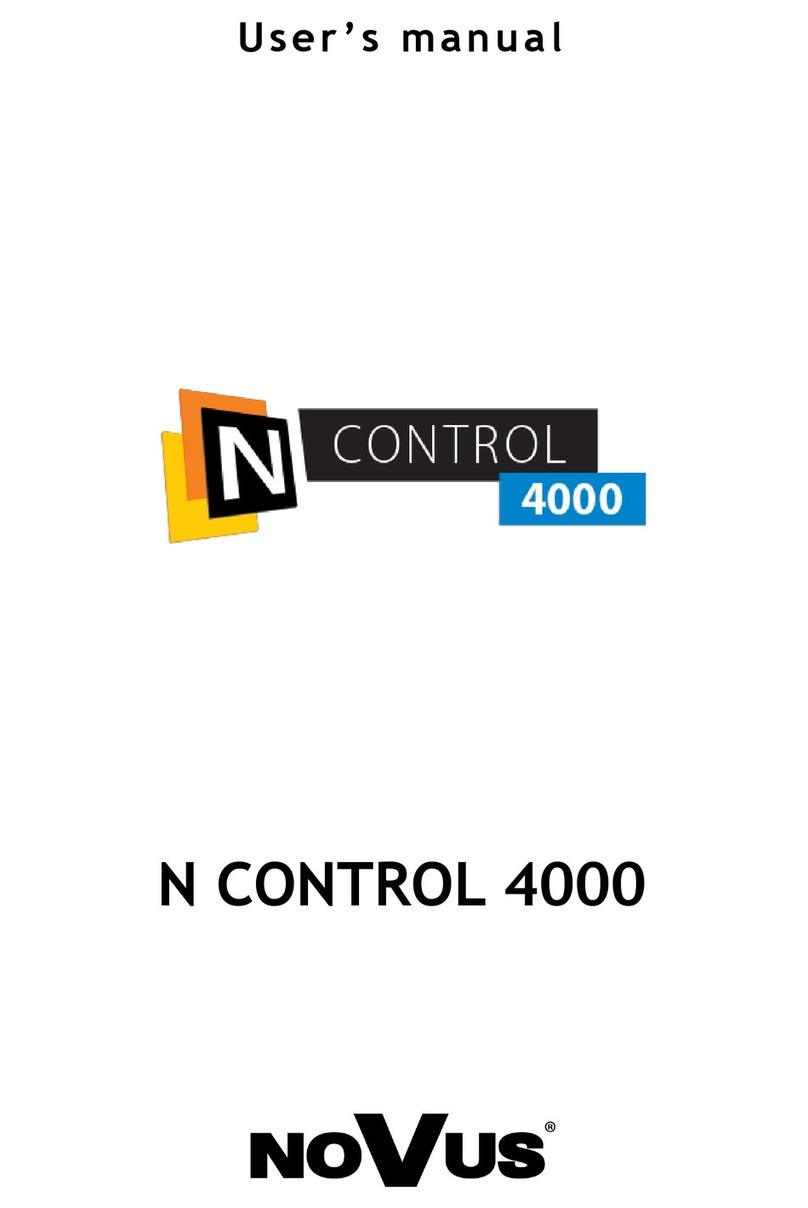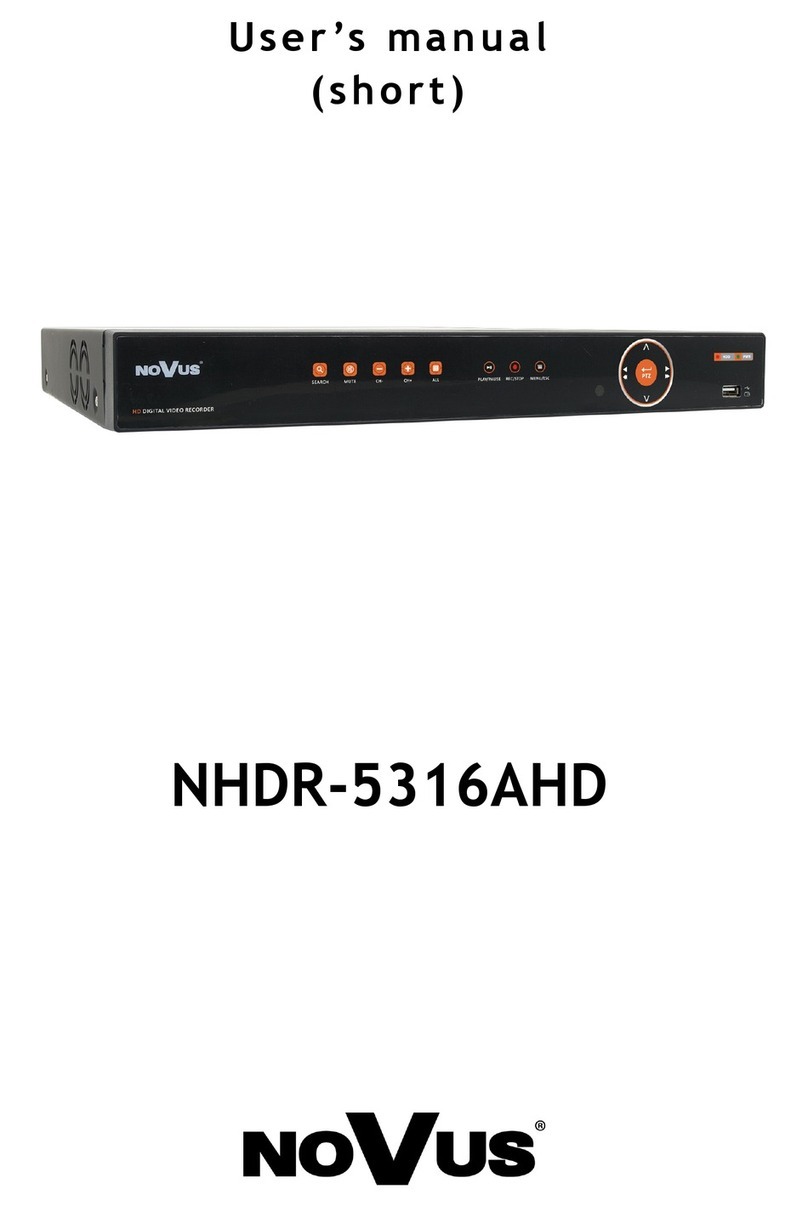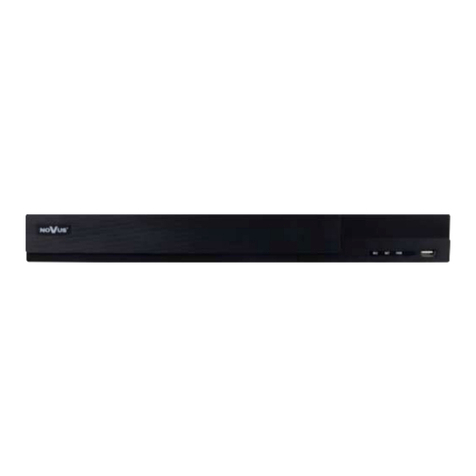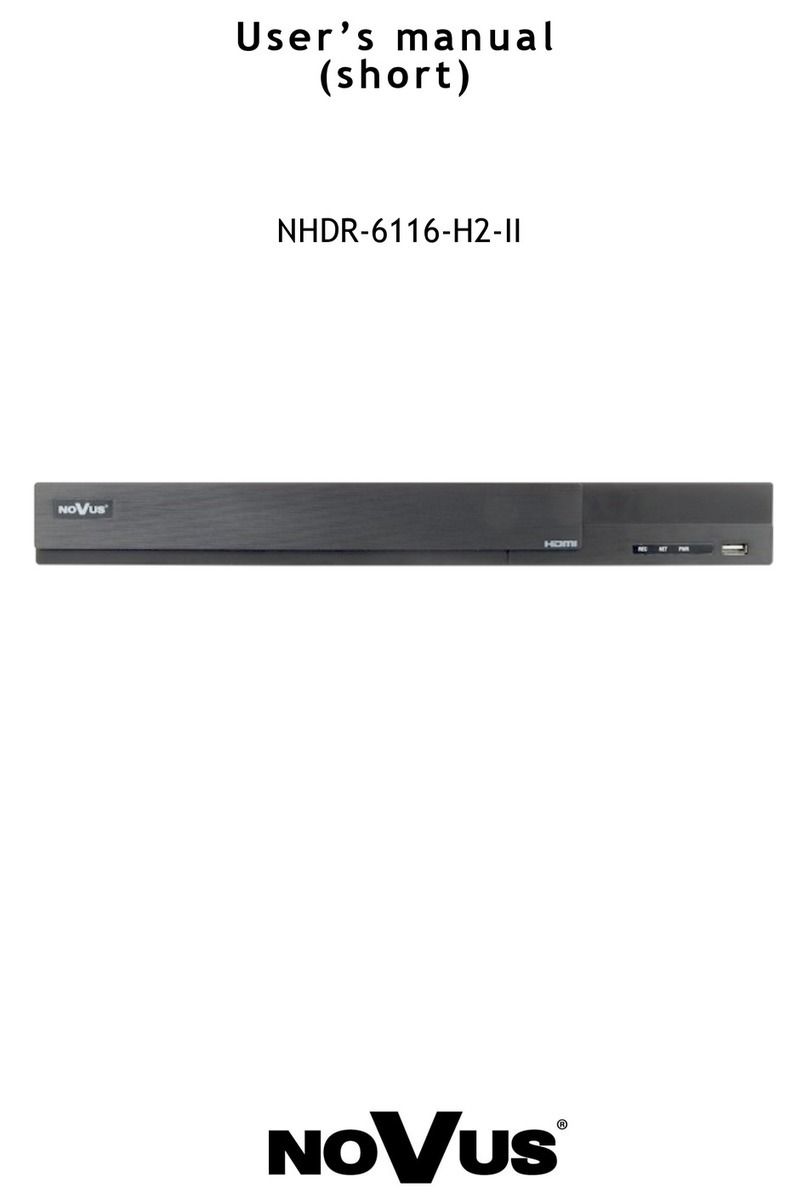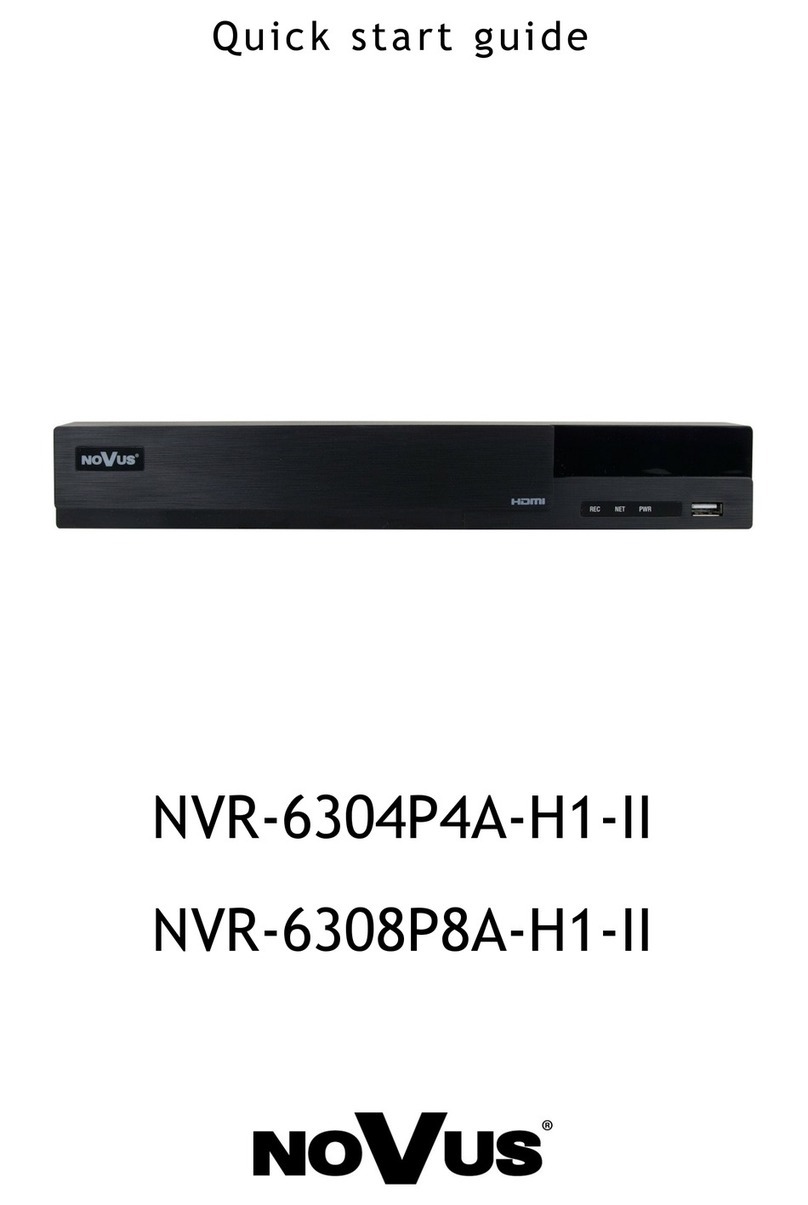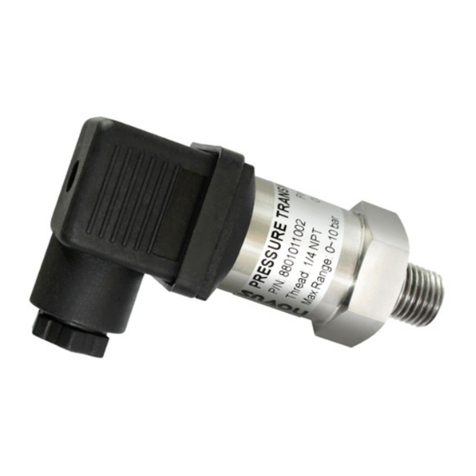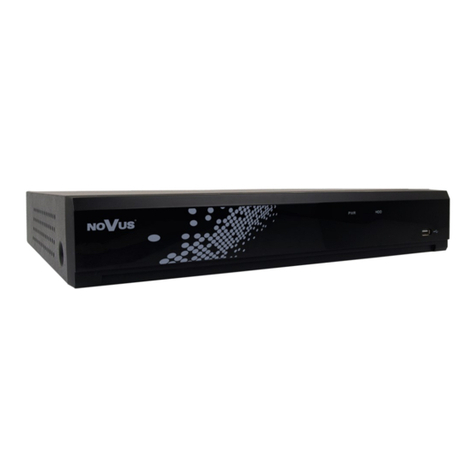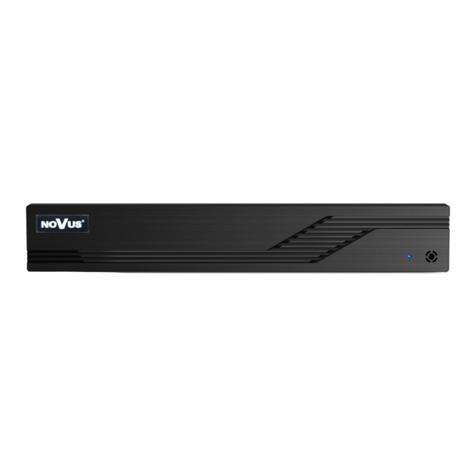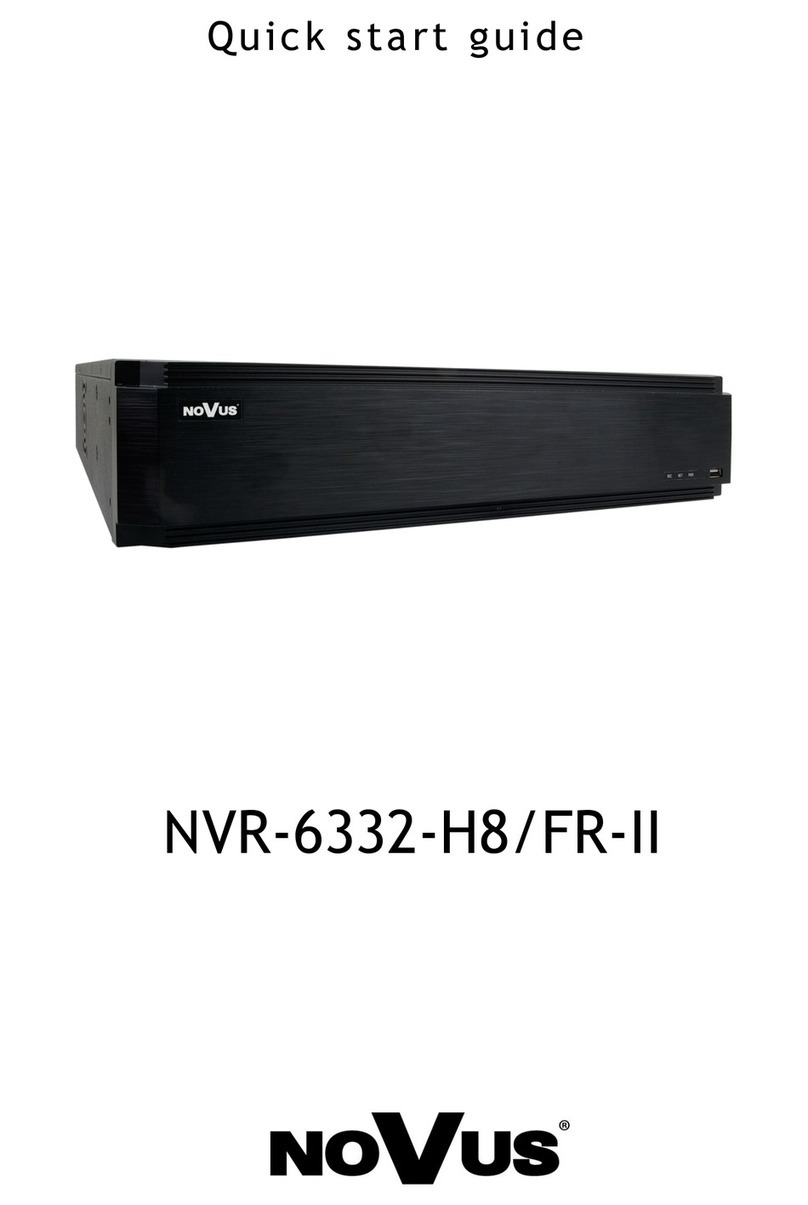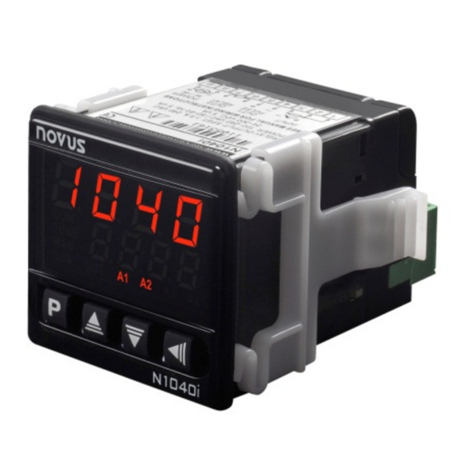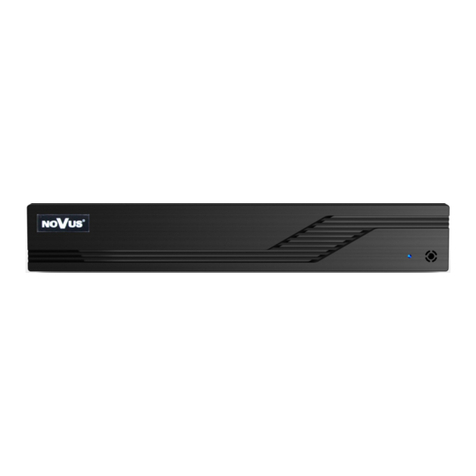
ELECTRICAL WIRING
Fig. 1 below shows the temperature meter connections to sensor, mains and
outputs.
Fig. 1 – N320 terminals
Pt100 with 3 conductors. Terminals 11, 12 and 13 must have the same wire
resistance for proper cable length compensation. For 2 wire Pt100, short circuit
terminals 11 and 13.
It is important to follow the recommendations below
•Signal wires should be installed in grounded conduits and away from power or
contactor wires.
•The instrument should have its own power supply wires that should not be
shared with electrical motors, coils, contactors, etc.
•Installing RC filters (47 R and 100 nF, series combination) is strongly
recommended at contactor coils or any other inductors.
•System failure should always be taken into account when designing a control
panel to avoid irreversible damage to equipment or people.
OPERATION
The temperature meter requires the internal parameters to be configured according
to the intended use for the instrument. The parameters are organized in 3 groups or
levels:
Level Function
2 Calibration
Upon power-up, the N320 display shows for 1 second its firmware version. This
information is useful when consulting the factory.
Then, the temperature measured by the sensor is shown on the display. This is
the parameter level 0(Temperature Measurement level).
To access level 1 of parameters, press for 1 second until the
message
is shown. Release the key to remain in this level. Each new pressing on the
key will advance to the next parameter in the level. Press again to return
to the initial screen (temperature display).
To access level 2 of parameters, press for 2 seconds until the
message
is shown. Release the key to remain in this level. Each new pressing on the
key will advance to the next parameter in the level. At the end of the level, the
temperature meter returns to the first level (0).
Use the and keys to alter a parameter value.
Notes: 1 A parameter configuration is saved when the key is pressed
to advance to the next parameter in the cycle. The configuration
is stored in a non-volatile memory, retaining its value when the
thermometer is de-energized.
2 If no keyboard activity is detected for over 20 seconds, the
thermometer saves the current parameter value and returns to
the measurement level.
Level 1 – Configuration Level
Contains the configuration parameters to be defined by the user, according to the
system’s requirements. Use and keys to set the value. The display
alternates the parameter name and respective value.
Selects display indication for degrees Celsius
Temperature in degrees Celsius
Temperature in degrees Fahrenheit
Input Type - Selects the input sensor type to be connected to the
temperature meter. Available only for thermocouple models,
allowing selection of types J, K and T.
Offset value to be added to the measured
temperature to compensate sensor error.
Level 2 – Calibration level
The temperature meter is factory calibrated. The following parameters should be
accessed only by experienced personnel. To enter this cycle, the key must be
kept pressed for 3 seconds.
Don’t press the and keys if you are not sure of the calibration
procedures. Just press the key a few times until the temperature
measurement level is reached again.
Password - Enter the correct password to
for the parameters in the following levels.
Offset value of the input. It adjusts the lower
measurement range of the sensor.
Calibration High - Gain calibration
measurement range of the sensor.
Cold Junction Offset calibration -
This parameter is available
Restores factory calibration
parameters. Change from 0to 1to restore the calibration
parameters with factory values.
the levels of parameters that will be password
protected. See "Configuration Protection" for details.
Password Change - Allows changing the current password to a
new one. Values from 1 to 999 are allowed.
Serial number - First part of the temperature meter serial number.
Serial number - Second part of the temperature meter serial number.
Serial number - Third part of the temperature meter serial number.
ERROR MESSAGES
Sensor measurement errors force the temperature meter outputs to be turned off.
The cause for these errors may have origin in a bad connection, sensor defect
(cable or element) or system temperature outside the sensor working range. The
display signs related to measurement errors are shown below:
Measured temperature exceeded maximum allowed range for
the sensor. Broken Pt1000 or T/C. Short circuited NTC sensor.
Measured temperature is below m
inimum measurement range of
the sensor. Short circuited Pt1000 or T/C. Broken NTC.
CONFIGURATION PROTECTION
A protection system to avoid unwanted changes to the temperature meter
parameters is implemented. The level of protection can be selected from partial to
full. The following parameters are part of the protection system:
When this parameter is presented, the correct password should be entered
to allow changes of parameters in the following levels.
Defines the level of parameters that will be password protected:
1 -Only calibration level is protected (factory configuration);
2 -Calibration and configuration levels are protected;
3 -All levels are protected - calibration, configuration and SP.
Parameter for definition of a new password. Since it is located in the
calibration level, can only be changed by a user that knows the current
password. Valid passwords are in the range 1 to 999.
CONFIGURATION PROTECTION USAGE
parameter is displayed before entering a protected level. If the correct
password is entered, parameters in all following levels can be changed. If wrong
or no password is entered, parameters in the following levels will be read only.
Important notes:
1- After five consecutive attempts to enter a wrong password, new tentative will
be blocked for the next 10 minutes. If the current valid password is unknown,
the master password can be used only to define a new password for the
temperature meter.
2 - The password for a brand new device is 111.

